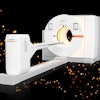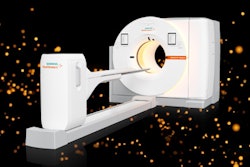NEW ORLEANS – Two newly developed PET imaging agents are effective for identifying a highly expressed receptor in neurological and psychiatric conditions, according to a presentation at the 2025 Society of Nuclear Medicine and Molecular Imaging (SNMMI) annual meeting.
The histamine H3 receptor (H3R) regulates histamine synthesis and release in the central nervous system, which influences learning, memory, and sleep. H3R inhibition has shown therapeutic potential for treating a variety of brain disorders, and accurate detection of H3R expression and distribution is crucial for drug development, noted presenter Zhendong Song, PhD, a postdoctoral fellow at Emory University in Atlanta, Georgia.
“Currently, there are only three H3R PET tracers that have reached clinical evaluation -- all of which are labeled with carbon-11 [C-11]. Since C-11 has a very short half-life [approximately 20 minutes], the clinical utility of these tracers is greatly limited,” Song said.
To address these challenges, the researchers aimed to develop novel H3R PET tracers with enhanced target specificity and optimal tracer performance.
First, the group designed and synthesized 14 H3R antagonists and then conducted binding affinity assays to identify the most promising candidates. The antagonists with the highest binding affinities -- H3-2401 and H3-2406 -- were then radiolabeled with F-18 for further evaluation.
Next, the group conducted autoradiography, dynamic PET imaging, blocking studies, and ex vivo biodistribution studies in rodents to further evaluate their properties and potential for neuroimaging.
 Representative summed PET images of mouse brain uptake under baseline and GSK189254-blocking (3 mg/kg prior to tracer injection) conditions.Zhendong Song, PhD, and SNMMI
Representative summed PET images of mouse brain uptake under baseline and GSK189254-blocking (3 mg/kg prior to tracer injection) conditions.Zhendong Song, PhD, and SNMMI
According to the results, PET imaging with F-18 H3-2401 and F-18 H3-2406 revealed high brain uptake and excellent specificity. The probes also showed improved in vivo stability and favorable pharmacokinetics. Furthermore, the 108 minutes half-life of the tracers was significantly higher than C-11 tracers, Song noted.
Ultimately, the research offers a valuable reference for the rational design of future brain imaging agents, particularly for underexplored targets like H3R, Song noted. Future efforts will focus on structural optimization, followed by preclinical testing in Alzheimer’s and Huntington disease models, she concluded.





















